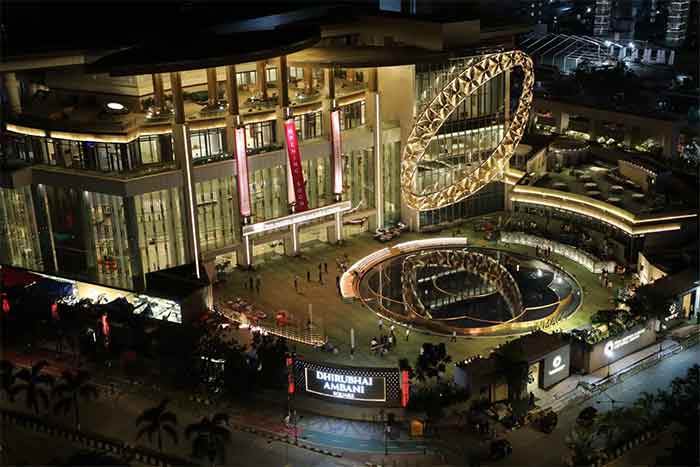
Rohini Hattangady, Mukta Barve , the entire all woman cast of the acclaimed feminist Marathi play Char Choughi recently vociferously praised the municipal drama theatre in Vashi in Navi Mumbai for its good facilities. It is named after Vishnudas Bhave, the pioneer of Marathi theatre.
This happened because though there is a thriving theatre movement in Maharashtra as nowhere else in the country, many theatres are poorly maintained, women artistes particularly fear the insanitary toilets.
There is need to see the recently opened and much hyped , opulent Nita Mukesh Ambani cultural centre in the corporate Bandra Kurla complex area in Mumbai in the wider context of theatre and art. It also claims to promote art with its art and exhibition galleries . This should lead to thinking about the role of the corporates in the field of art in the same way as the recent politicization of the National Gallery of Modern Art in Delhi. Prominent artists in the country have come in for severe criticism for their abject surrender to the ruling powers. Their works lauding the Prime Minister’s 100th talk to the nation in the Mann ki Baat series were specially commissioned and are exhibited here.
We have some good examples of democratic theatre spaces created by creative people The vibrant Prithvi Theatre in Juhu set up by Shashi Kapoor, theatre and film actor. Elsewhere, there are similar innovative ventures like Mallika Sarabhai’s Natarani in Ahmedabad or Ninasam in Shimoga district in Karnataka offering a rich cultural fare to villagers.
It is most commendable that the Kapoors used their own land in a prime area for a theatre which is also a great meeting place for informal interaction , gathering of theatre artistes. The theatre makes it clear that there is no car parking space at it and around it. Yet, people come here in large numbers which shows that if the offering is good, people will come. In contrast, the Ambani centre has parking for 5000 cars, not all of it is open yet but it is there.
In Mumbai the state government made a good beginning recently by reducing the rent for its Ravindra Natya Mandir to just Rs.3000 per show and giving free the P.L. Deshpande mini theatre sabhagraha.
In the Ambani centre there are artisans giving demonstration in the foyer like weavers from Kashmir, those working with gold and gems on Hindu god images from Thanjavur and Mysore and so on. But everything here is profit oriented, related to profit maximization , marketing and commercialization. So there is a hefty fee for entry to the art gallery in the centre unlike in almost all major galleries in India or even in many cities in the West. Interestingly, it is free also in the Smithsonian gallery of Asian art in the U.S. in which Isha Ambani is a board member.
It is odd that a group that started with synthetic polyster now wants to promote traditional textiles and craft, said Ayesha Matthan,a researcher in art history.
There is need to democratize the art and craft market, free it from corporate control, pioneering efforts have been made in this area by the likes of Kamaladevi Chattopadhyaya, Pupul Jayakar, Leila Tyabji and Jaya Jatiley.
It is a welcome sign that some voices are being raised against the complicit role of some noted artists working in league with politicians. But few voices have been raised over the years over the rigging of prices and commercialization of modern art by the rich. The eminent art critic Robert Hughes called it vandalism and cultural obscenity. Not surprisingly, one hardly hears of him in India , same is the case with the well proven role of the CIA for decades in promoting abstract art as the Americans were so fearful of the revolutionary potential of art. The fear continues. When American secretary of State Colin Powell went to the United Nations to justify the invasion of Iraq, the Americans covered the reproduction of Picasso’s iconic anti-war painting Guernica.
The Jehangir art gallery is so friendly and informal in sharp contrast to the Ambani centre where one is being constantly watched and policed. People sit on the verandah at the entrance of Jehangir gallery, it is a popular point to meet and discuss issues. Artistes also paint and exhibit on the footpath below.
On the Ambani cultural centre, Frontline was one of the very few major media voices so far to critically take a look at it and last Sunday’s piece in National Herald by Rashmi Sawhney, academic, does that.
Vidyadhar Date is a senior journalist , culture critic and author of a book on public transport









































